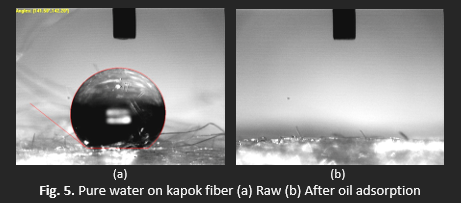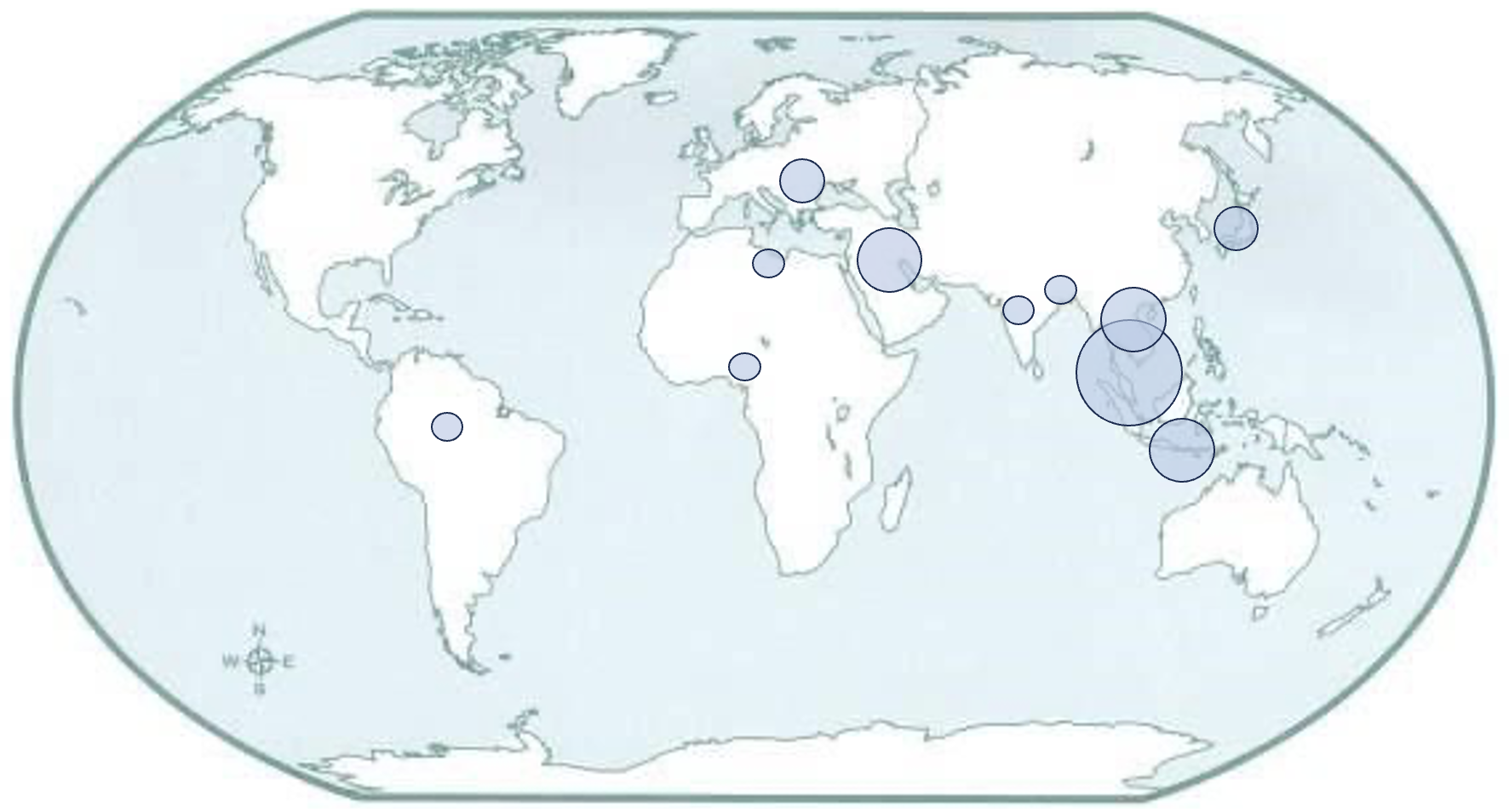Effects of Temperature and Agitation on the Kinetics of Vegetable Oil Adsorption onto Kapok Fiber
DOI:
https://doi.org/10.37934/arefmht.18.1.8193Keywords:
Kapok fiber, oil adsorption , kinetic study, agitation, oil adsorptionAbstract
The unique properties of this natural fiber have sparked interest among researchers, opening possibilities for its potential use in oil spill cleanup. The oil adsorption may be influenced by temperature and agitation as revealed by past studies. This research focuses on both agitation speed at maximum of 200 rpm and temperature ranges from 30°C to 90°C in adsorption process to find an optimal condition to enhance the oil adsorption process. The analysis and characterization of kapok fiber by using scanning electron microscope (SEM), Fourier transform infrared spectroscopy (FTIR), and contact angle analysis that provided understandings into the structural and surface morphology of kapok fiber before and after oil adsorption. From the SEM morphology the kapok fiber observes the waxy surface and hollow lumen and porous structures believed can provide substantial capacity for oil storage.Downloads
Download data is not yet available.

Downloads
Published
2025-01-17
How to Cite
Hussin, R. ., Raja Ahmad, R. A. ., Azman, A. M. ., Bukhori Hamidon, M. A. ., Harun, Z., Yunos, M. Z. ., & Ainuddin, A. R. . (2025). Effects of Temperature and Agitation on the Kinetics of Vegetable Oil Adsorption onto Kapok Fiber. Journal of Advanced Research in Experimental Fluid Mechanics and Heat Transfer, 18(1), 81–93. https://doi.org/10.37934/arefmht.18.1.8193
Issue
Section
Articles






















